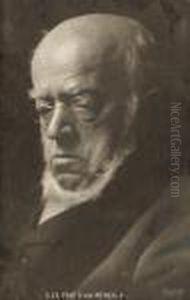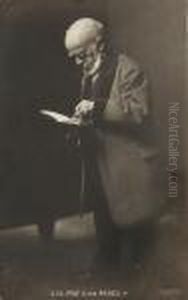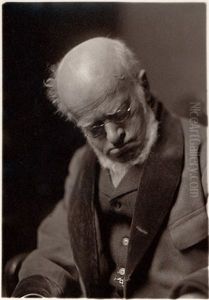Jacob Hilsdorf Paintings
Jacob Hilsdorf, born on July 6, 1872, in Koblenz, Germany, was a notable portrait painter who gained recognition during the late 19th and early 20th centuries. His work is characterized by its detailed and expressive approach to portraiture, often capturing the social and psychological nuances of his subjects.
Hilsdorf studied at the Prussian Academy of Arts in Berlin under the tutelage of prominent artists such as Anton von Werner and Ernst Hancke, which greatly influenced his early artistic development. His academic training provided him with a strong foundation in traditional techniques, which he later applied in his own distinctive style.
Throughout his career, Hilsdorf exhibited a keen interest in capturing the likeness and character of his subjects. He was particularly adept at portraying the upper echelons of society, including aristocrats, politicians, and wealthy patrons. His portraits were celebrated for their elegance, attention to detail, and ability to convey the personality and status of the sitters.
Despite his success as a portraitist, Hilsdorf's life was marked by tragedy and health issues. He suffered from a debilitating illness that impaired his ability to work consistently. This struggle, however, did not prevent him from leaving a significant mark on the art world of his time. Hilsdorf's portraits are still studied for their technical proficiency and their insightful representation of the human condition.
Jacob Hilsdorf's life and career were cut short when he passed away on May 7, 1916, in Berlin. His work continues to be appreciated for its artistic merit and as a representation of the portrait genre during the Wilhelmine period in Germany. Hilsdorf's contributions to art history are preserved in the collections of various museums and through the legacy of his influential portraits.


